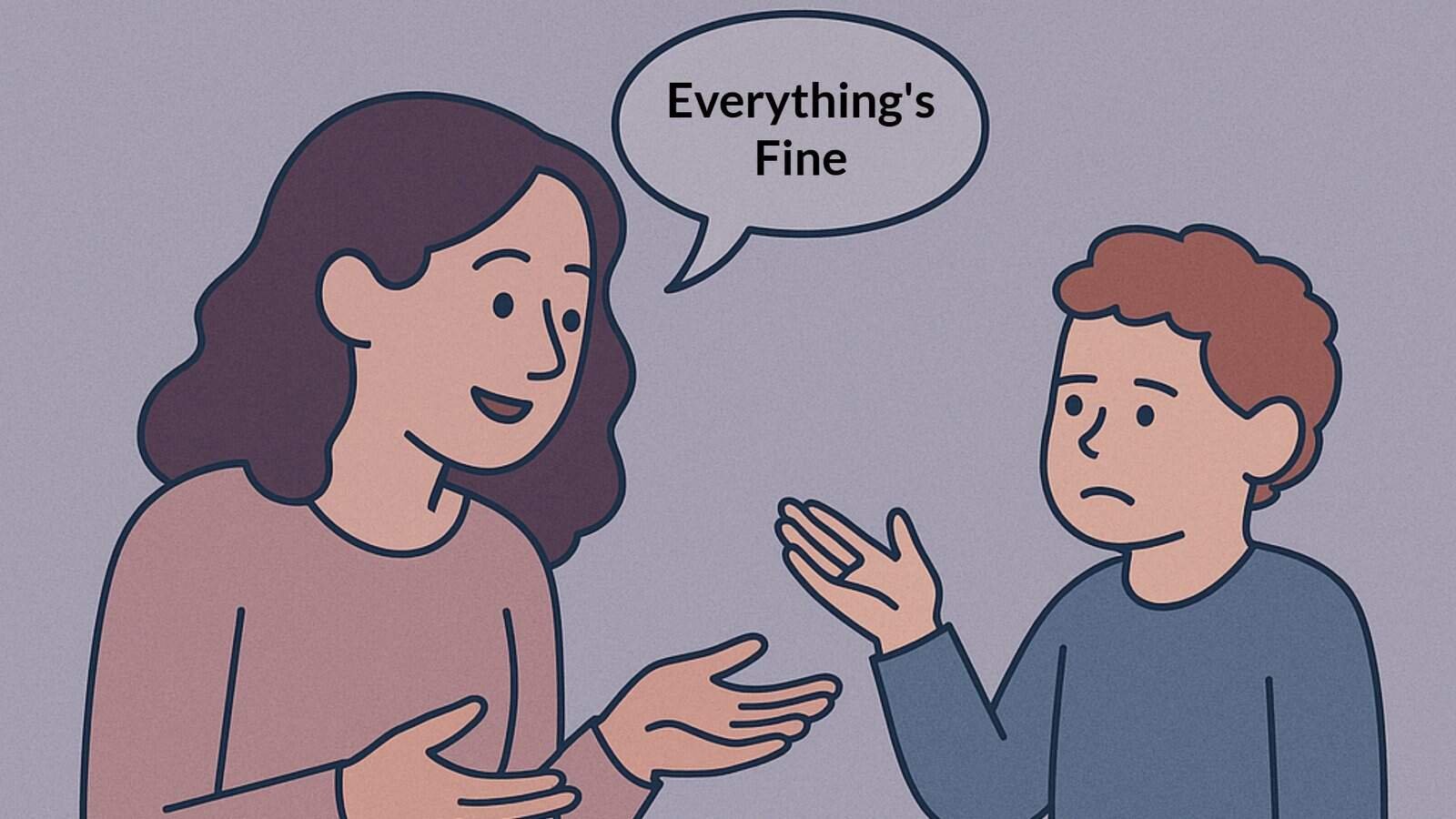Why “Keeping the Peace” Might Be Costing Your Family More Than You Think
We’ve all heard the phrase: “Don’t rock the boat.” This idea was practically gospel for many of us raised in Baby Boomer households. Be polite. Don’t make a scene. Let things go. And most of all—keep the peace.
But what if that so-called peace wasn’t peace at all?
What if, instead of safety, we were handed silence?
Instead of resolution, we inherited repression?
In today’s parenting culture, we’re beginning to name what was previously invisible: the façade of peace. TikTok creator Angela Baker gave voice to something millions recognized instantly—“dishonest harmony, ” the idea that some families maintain the appearance of peace by avoiding conflict at all costs.
Sound familiar?
Maybe your family smiled in photos but never talked about the hard stuff. Perhaps you were told to “let it go” or “don’t upset your mother” whenever real emotions surfaced. Maybe “forgive and forget” actually meant “suppress and smile.”
If you’re a parent now, you might find yourself doing something similar, even if you swore you wouldn’t.
This is where The Enneagram World of the Child invites a deeper reflection.
The Enneagram isn’t just a personality tool—it’s a lens for seeing how a child’s inner world forms. When children grow up in homes dominated by dishonest harmony, their sense of self isn’t formed through authenticity but through adaptation.
Let’s say a child is wired toward emotional sensitivity. This child learns that her inner truth is too much in a home where sadness is dismissed or shame is deflected. She may internalize the belief that I must become someone else if I want to belong.
Or take a child inclined toward justice and directness. In a family where hard truths are avoided for the sake of peace, this child becomes “the problem,” the one who causes “drama,” when they may be the only honest one in the room.
So here’s the question every parent can reflect on:
Are we raising our children to feel safe expressing their truth? Or just training them to be well-behaved actors in a family play called ‘Everything’s Fine’?
- When we avoid conflict, our children learn that love means silence.
- When we suppress our pain, our children learn that emotions are threats.
- When we perform peace, our children learn that authenticity is dangerous.
And here’s the quiet heartbreak: the child doesn’t stop feeling. They stop sharing.
As parents, our job is not to avoid conflict—it’s to model how to navigate it. We don’t need to be perfect, but we should be real. We want to show our children that intimacy doesn’t mean everything’s smooth; it means everything can be spoken.
The Enneagram gives us language for how each child longs to be seen. But it also challenges us to ask: Are we seeing our children through our fear of conflict? Or through their truth?
It’s not too late to shift.
You can begin by asking your child a different kind of question. Not “Are you okay?”—but “What are you feeling that I haven’t noticed?” Not “Why are you making a fuss?”—but “What feels unspoken between us?”
True peace doesn’t come from silence. It comes from connection.
And connection begins where performance ends.
So, what did your child learn today from your silence?
And more importantly… what could they learn from your honesty tomorrow?
